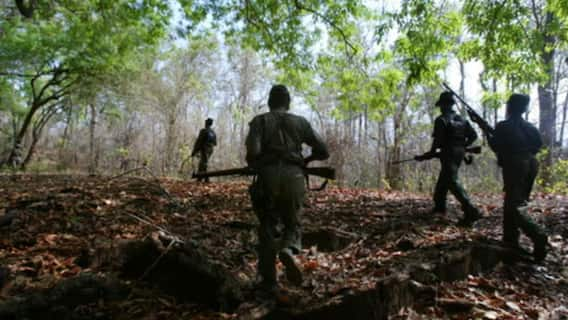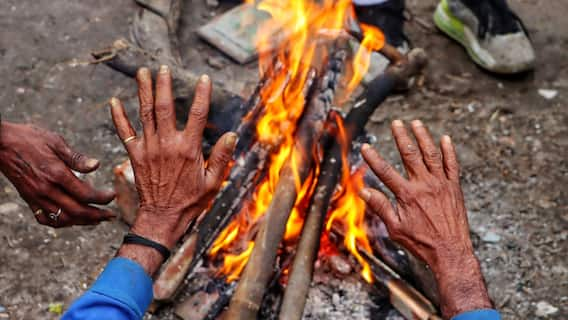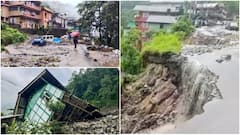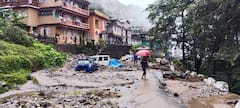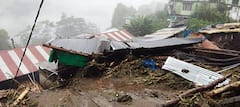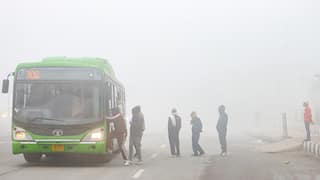30 Mild Earthquakes Jolt Northeast In Less Than 3 Months, Expert Says A Major One Can’t Be Ruled Out
The Northeast has experienced several devastating earthquakes in the past, which also changed the topography of the region. Seismologists say the region experiences frequent earthquakes as it falls in the seismic V zone.

Guwahati: Northeast India is experiencing frequent earthquakes since the beginning of this year. The region has experienced at least 30 minor and light tremors between January 1 and March 14, 2023.
The frequent earthquakes that have rocked the region in over two months alone have made many fear for the worse.
The first tremors to strike the region was on January 1, 2023. The 3.2 magnitude earthquake hit the hill district of Assam’s West Karbi Anglong.
The next time, it was a 3.3 magnitude earthquake that hit Mizoram’s Saitual district on January 7.
The first month of the year saw the region getting rocked by as many as seven more earthquakes, with an intensity ranging between 2.9 and 4.8 on the Richter scale.
Manipur was the worst-hit in the region with four tremors striking the state, followed by Assam and Mizoram, with two earthquakes each, respectively.
In February, altogether 16 earthquakes hit the Northeast, with an intensity ranging from 2.5 to 4.0 on the Richter scale.
Assam experienced the maximum number of earthquakes (5) last month, followed by Meghalaya and Manipur that saw four each. There were two quakes in Arunachal Pradesh and one in Mizoram in the second month of 2023.
At least four earthquakes have hit the region so far in the month of March, the latest being on March 14 when a mild 2.7 intensity earthquake hit Manipur’s Tamenglong district.
As per the seismic zoning map of the country, the total area is classified into four seismic zones. Zone V is seismically the most active region, while zone II is the least. Approximately, 11 per cent area of the country falls in zone V, 18 per cent in zone IV, 30 per cent in zone III and remaining in zone II.
Many Active Fault Lines Scattered Across NE, Making Region Seismically Active
According to seismologists, Northeast experiences frequent earthquakes as it falls in the seismic V zone.
Speaking to ABP Live on the recent earthquakes that have hit the northeastern region, Director of the Central Seismological Observatory, Shillong Andrew Cuthbert Lyngdoh said: “Northeast India is surrounded by active thrust zones and subduction zones in the North and Eastern part. Apart from that, there are also many active fault lines scattered within the Northeastern region which leads to the area being seismically active.”
He added: “From the past history, we have seen that the region had experienced major earthquakes of magnitude 8 and above. Also from well researched publications, we can see that this region can release major earthquakes.”
Asked if the region may experience a major earthquake in the near future, Lyngdoh asked people not to believe in rumours but to be prepared for any possible eventuality.
Past Earthquakes In Northeast
The region has experienced several devastating earthquakes in the past, which also changed the topography of the region.
An earthquake of an estimated 8.2–8.3 magnitude on the Richter scale occurred at 11:06 am Coordinated Universal Time (UTC) in Assam on June 12, 1897, which resulted in approximately 1,542 human casualties and caused catastrophic damage to the infrastructure.
The impact was felt as far as in Kolkata (then Calcutta), where dozens of buildings were severely damaged, and some even partially collapsed. Tremors were in fact felt across India, from Ahmedabad to Peshawar. Seiches were also observed in Burma.
The 1950 Assam-Tibet earthquake, also known as the Assam earthquake, occurred on August 15 and had a moment magnitude of 8.6. The epicentre was in the Mishmi Hills. It is the strongest earthquake ever recorded on land.
Occurring on a Tuesday evening at 7:39 pm, the earthquake was destructive in both Assam (India) and Tibet (China), and approximately 4,800 people were killed.
The earthquake is notable as being the largest recorded quake caused by continental collision rather than subduction, and is also notable for the loud noises produced by the quake and reported throughout the region.
The last major earthquake that struck Northeast was in Assam on April 28, 2021. Tremors hit the state at 7:51 am when most of the people were still sleeping. The quake occurred 11 km away from Dhekiajuli in Assam’s Sonitpur district.
The intensity of the earthquake was measured at 6.0 on the Richter scale, with its epicentre 140 km north of Guwahati. It resulted in two fatalities and at least 12 injuries.
The earthquake caused moderate but widespread damage to nearby buildings, although no collapses were reported. Among the buildings affected was a multi-storey structure in Nagaon, which tilted to its side and leaned against an adjacent building.
Cracks also appeared in the walls of homes and commercial buildings. A few vehicles were damaged when bricks fell on them. Landslides and liquefaction of the ground were reported in the state.
Damage to buildings were also reported in nearby Bhutan, and two individuals were injured. Two people in the Kamrup Metropolitan and Nagaon districts died of heart attacks caused by the earthquake while 12 others suffered injuries.
The author is a senior independent journalist covering Northeast India.
Trending News
Top Headlines










